
by Rick O'Connor | Sep 22, 2015
Many may not know that one of the reasons the Spanish selected Pensacola as the site of for their first settlement in the Gulf of Mexico was the deep water port. As mentioned in the first issue in this series, the estuaries of the Gulf of Mexico are drowned river valleys and are typically very wide and very shallow; ranging from 10-12 feet. Pensacola was different – the average depth was close to 30 feet. The Spanish immediately saw the advantage of this – being able to harbor their entire fleet within the bay and be protected from hurricanes; which of course did not work out for Don Tristian de Luna… but the deep water port was still a draw.
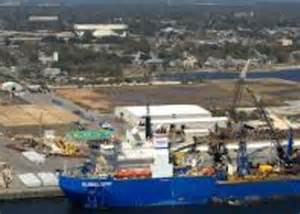
Port of Pensacola. one of the oldest on the Gulf Coast.
Photo: University of West Florida
William Bartram was amazed at its size and depth when he visited in the late 18th century commenting that “Pensacola Bay could harbor all of the fleets of Europe”. The United States did not miss out on this fact either; John Quincy Adams ordered a U.S. Navy Yard to be built in Pensacola after it became an official territory – which would later be the first Naval Air Station as well.
With the development of dredging technology some of the other estuaries within the Gulf became targets for port activity. The Port of Tampa, Port of Panama City, Port of Mobile, Port of Biloxi, Port of New Orleans, and one of the busiest ports in the country – the Port of Houston all grew and prospered.
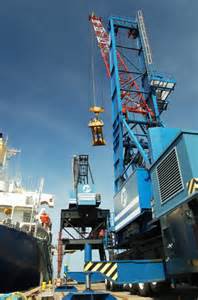
Port of Panama City.
Photo: Port of Panama City
What do these ports mean to the communities that share the bay with them? Well commerce… taxes… and jobs for starts. In 2012 a report showed that the Port of Houston provided 1,026,820 jobs, $4.5 billion in taxes, and a economic value of $178.5 billion; most in the Houston area. In addition to container ships, Houston deals with the oil industry (including refineries), asphalt and cement, storage, and ship repairs. Though the other ports may not generate such high numbers as Houston, they still generate tons of cargo movement and have economic value to the community in the billions of dollars. Many of these ports have now embraced the cruise ship industry and are looking at opening maritime history attractions to the area.
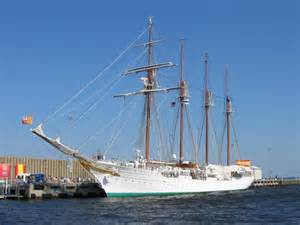
The Spanish vessel Panfilo de Narvaez visits Gulf Coast ports frequently giving locals a feel for the “old days” of commerce.
Photo: University of West Florida
All of these ports are located in protected estuaries. Though many of them require dredging, which is certainly controversial with some, the economic benefits are an important piece to their local economies. As a kid one of my favorite activities was to visit the Port of Pensacola and try to identify the flags of all of the nations that entered. I was always amazed when the tugs pushed these “big boys” out and loved watching them quietly steam past Ft. Pickens and out to the open Gulf. I shared this experience with my son and hope to with my grandkids. I encourage to learn more about your local ports; what products they move and the economic impact to the panhandle region. Ports are special places.
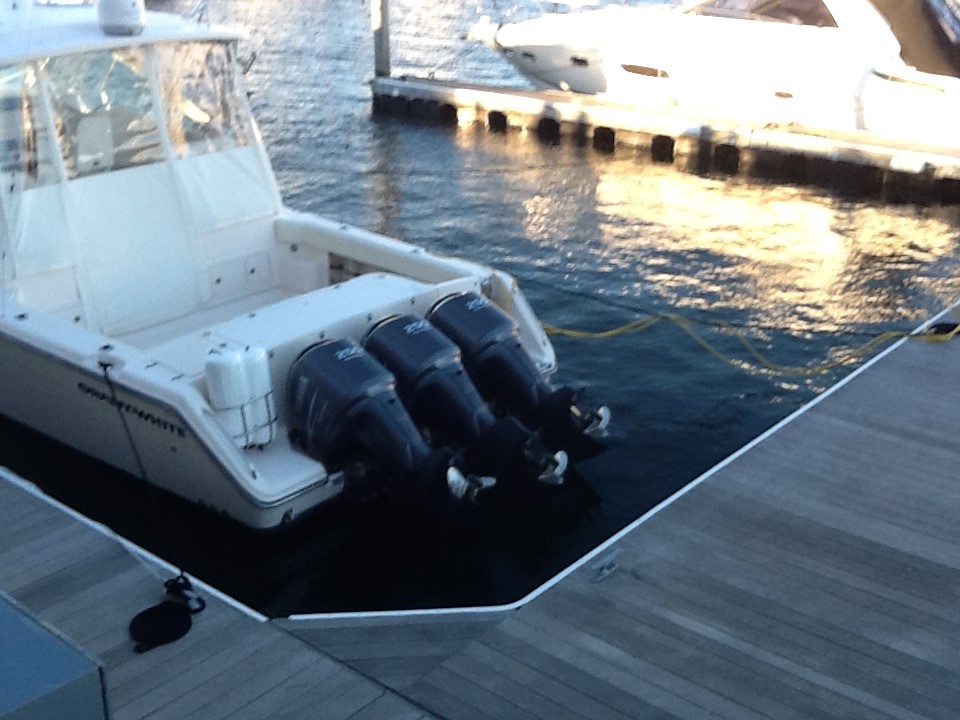
by Rick O'Connor | Aug 14, 2015
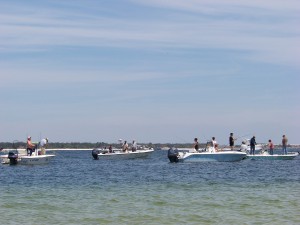
Boating is a very popular activity in the sunshine state.
Photo: Rick O’Connor
Okay… Let’s start at the beginning. We began drilling oil over 100 years ago. The crude was refined into kerosene, gasoline, plastics, and other products that have completely changed our lives. A huge international industry developed from the drilling and employed who knows how many people. But then a few problems began to emerge…
The emissions from burning oil have added compounds to our atmosphere that have contributed to human health issues and have changed the climate. As the human population grew the demand for this energy source grew, and the problems grew as well. One of the first steps made by the governments and the industry to curb the problems was the removal of lead from gasoline. At first this was problematic because many of the internal combustion engines that ran on gasoline did not run efficiently on unleaded and a back-lash occurred. Service stations offered both leaded and unleaded at the pump and motorist could choose. The car industry followed by developing engines that ran on unleaded only and eventually leaded gasoline was no longer offered. Since the phase out the blood lead level has dropped from 88% of children in the United States to 1% in 2006 (www.worstpolluted.org).
The next issue was the amount of oil. Though many text list fossil fuels as a renewable energy, it takes millions of years to renew it – so in the time frame we think of it is basically a non-renewable resource. With a finite amount of oil available the industry began looking for new sources of oil and encouraging the public to conserve their use. The government answered this by requiring the car industry to produce fuel efficient automobiles, which they have. My original truck got between 8-12 mpg, today’s trucks can get over 20 mpg. Smaller, more efficient engines that burn unleaded gasoline have certainly improved some of the problems.
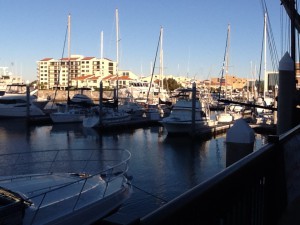
One of many marinas in Florida where boats fuel.
Photo: Rick O’Connor
However the population continues to grow. I remember just a few years ago everyone was amazed when we hit 6 billion humans, we are now at 7.2 billion and the clock moves quickly (http://www.census.gov/popclock/) . The largest growth has been in China and India. Both of these nations have experienced huge increases in their economy and quality of life. As their economic status improved their demand for energy increased and concerns about the amount oil demand increased. With the somewhat finite amount of oil, and the compounds that are still part of the emissions. Many became concerned about what would happen with growth in that part of the world. One answer to both emissions and amount was to begin searching for alternative fuels. Biofuels was one option. These fuels can be generated from plant material, which can produce ethanol. There are certainly some problems with growing corn for fuel instead of food but this is one option that the industry began to explore. Just as the original engines had problems with unleaded fuel, today’s engines have problems with ethanol. The engines that power the Indy and Formula 1 race cars do use biofuels but who can afford a Formula 1 engine? The industry’s response was to blend ethanol into the existing unleaded gasoline and offer this. The hope was that the global amount of gasoline could be conserved using this method. The original fuel was 10% ethanol and was called E-10 fuel. As expected problems occurred. Though the engine ran pretty efficiently if the fuel was used in a relatively quick period of time, and not allowed to sit within the tank and fuel lines, the ethanol began to degrade parts. Pieces of rubber and plastic blocked fuel lines causing all sorts of problems. I personally experienced this issue with my outboard motor. The outboard industry responded by developing more E-10 friendly engines and additives you can use if your fuel will be sitting in the tank for long periods of time. It is currently recommended that if you are not going to use your lawnmower or outboard over winter that you fill the tank for storage. Ethanol breaks down and water is produced. With a full tank there will be less water accumulation over time. Now comes E-15.
Yep… E-15, 15% ethanol. Though this move will eventually improve some of the problems with using oil there will be, as there have been, some growing pains. IT IS NOT RECOMMENDED THAT OUTBOARD MOTORS, LAWN CARE MOTORS, OR ANY OTHER SMALL ENGINE, use this E-15 fuel. It is currently being offered at service stations but in many cases is NOT clearly marked. All boaters, lawn care operators, and anyone else who uses small engines should check the gas pump labels carefully before fueling.







